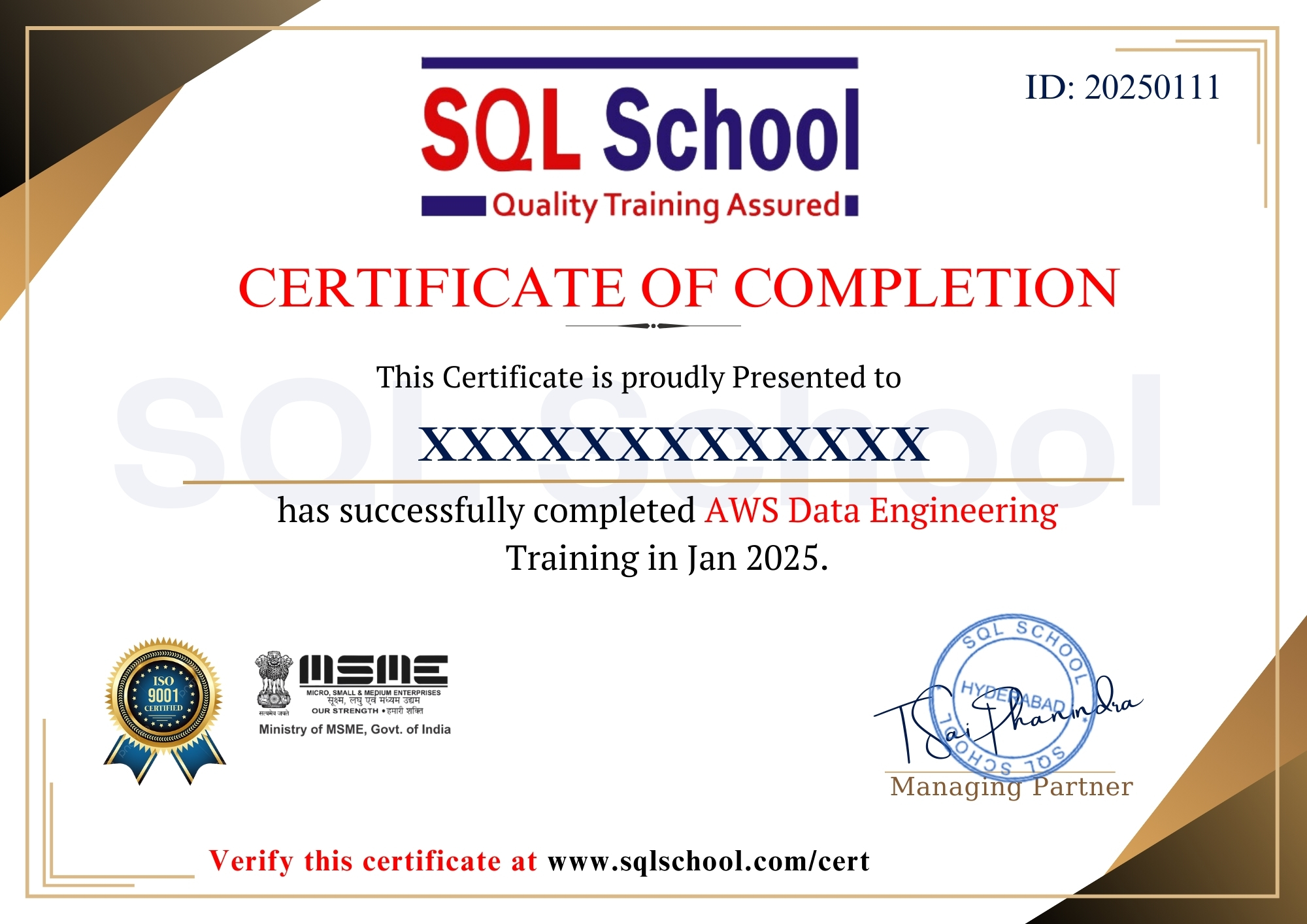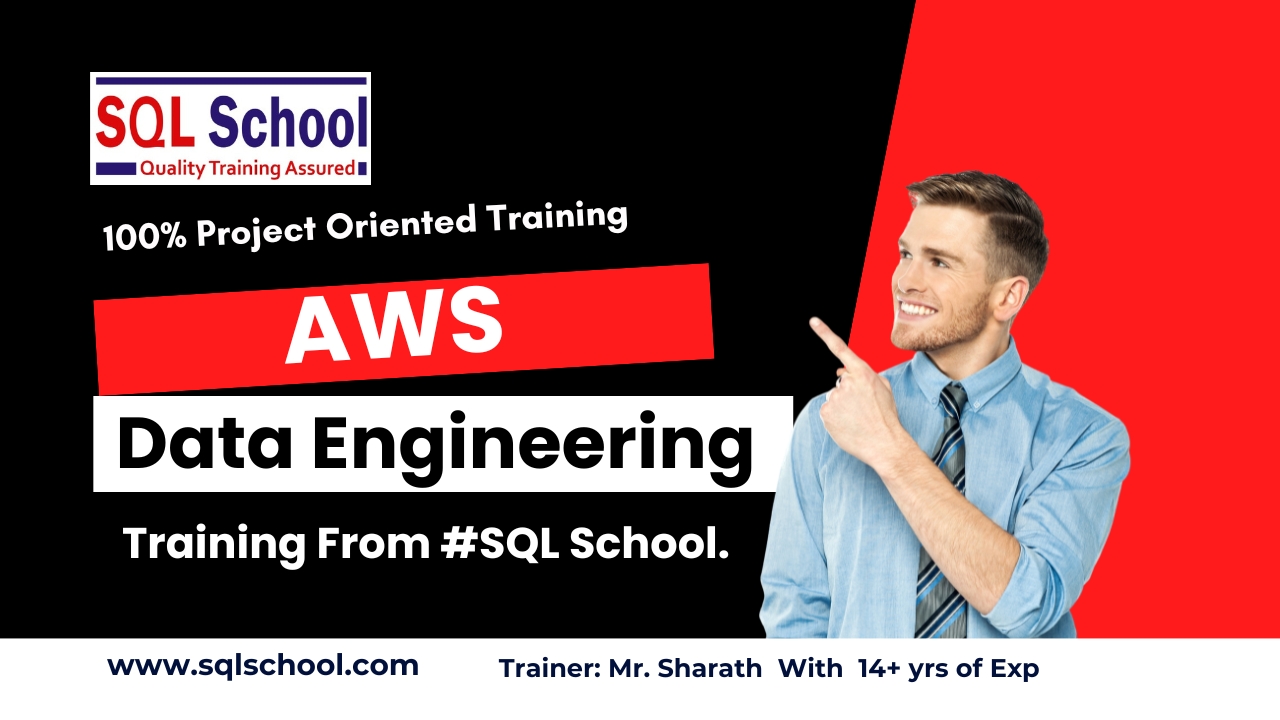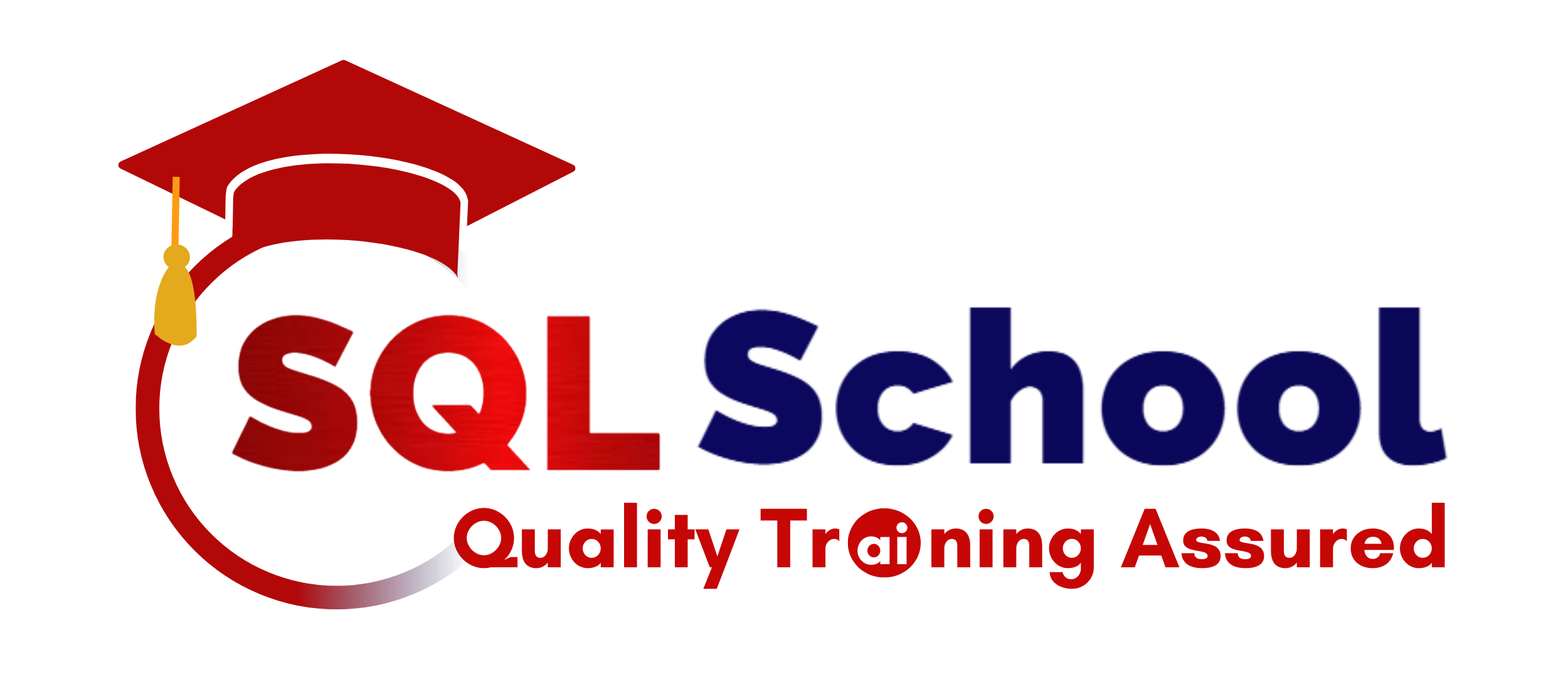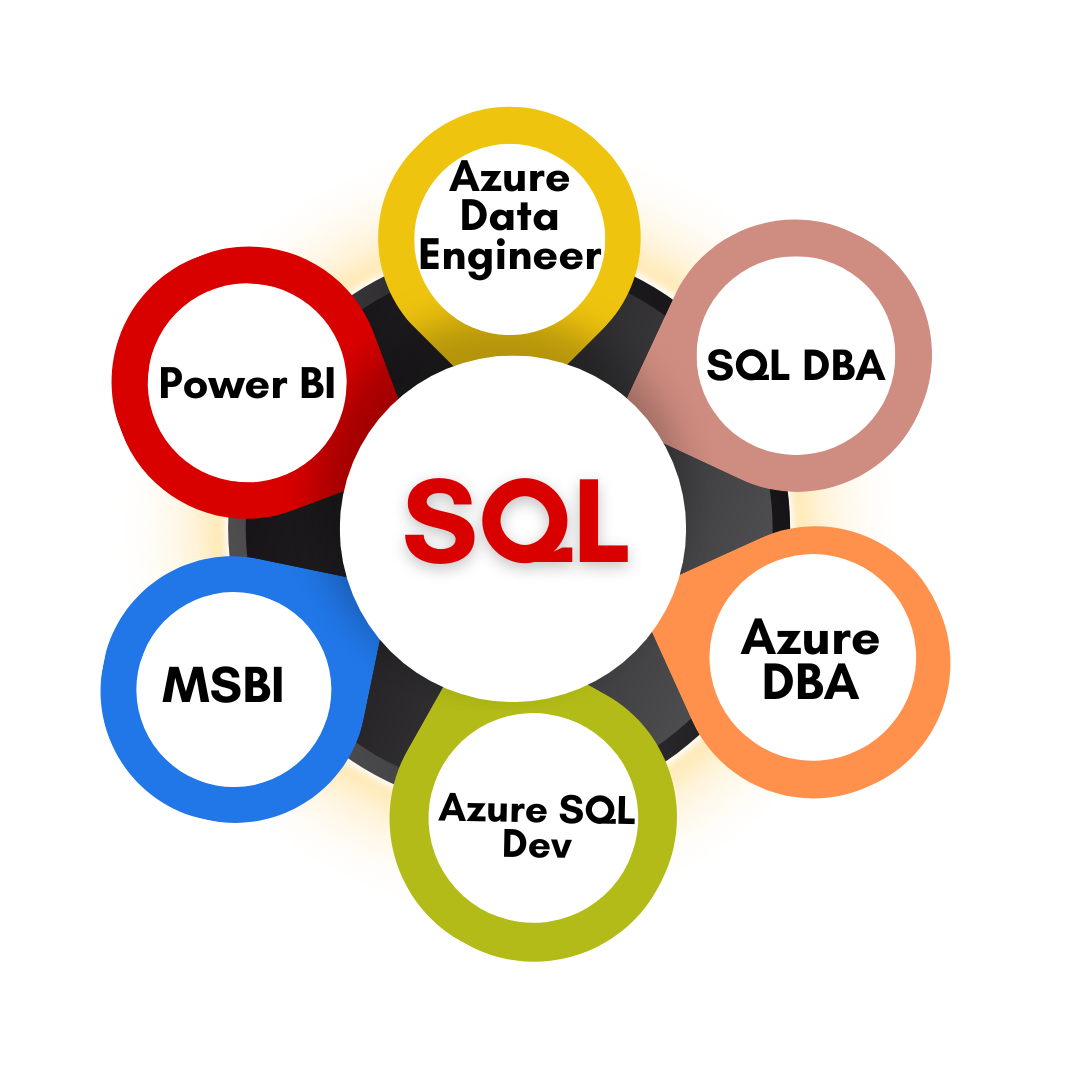- 4.7

#AWS Data Engineering Course
- ✅What is Data Engineering
- ✅Cloud Computing Introduction
- ✅MySQL using RDS
- ✅Python Programming
- ✅Basic Linux Commands
- ✅Data Engineering Technologies
Students Enrolled Ratings Duration
AWS Data Engineering Schedules
AWS Data Engineering
Course Contents:
AWS Data Engineering : Detailed content
What is Data Engineering: Definition and key concepts: Different Data Engineering Technologies: Tools and platforms used in data processing: Importance of Python in Data Engineering: Scripting, automation, and data manipulation: Importance of SQL in Data Engineering: Querying, managing, and transforming data: Importance of Linux in Data Engineering: Command-line usage, scripting, and system management: Cloud Computing Introduction: Overview of cloud platforms and their relevance to data engineering.
SQL Introduction: Provisioning MySQL using RDS: Create, Alter, Drop Database: Create, Alter, Insert tables: Key Constraints: Select Queries: Joins.
Python Introduction: Python Programming Introduction: Interactive Mode Development & Script Mode Development: Python Installation on Windows Operating System & First Python Program using Python Shell: Anaconda Python Installation and First Python Application using Jupyter Notebook & Spider IDE: Python Editors & IDE Software’s Installation & First Python Application using Editors & IDE’s – Notepad++, PyCharm IDE, VSCode
AWS Introduction: AWS Global Infrastructure (Regions & Availability Zones): AWS Account Creation: AWS Free-tier: AWS EC2: AWS IAM
PySpark Foundation: PySpark Core Programming – RDD Programming, Transformations & Actions: PySpark SQL – DataFrames, Tables, DSL & Native SQL: PySpark Streaming Programming: PySpark RDS Integration: PySpark S3 Integration
Introduction to S3: Overview and use cases; S3 Buckets and Objects: Creating and managing buckets and objects; S3 Versioning: Enabling and managing versioning; S3 Security and Bucket Policies: Setting up bucket policies and access control; Static Website Hosting: Hosting a static website on S3; Cross-Region and Same-Region Replication: Configuring replication for data redundancy; S3 Storage Classes: Overview of storage classes and cost optimization; Configuring S3 Lifecycle Rules: Automating transitions and expiration
AWS S3 Introduction: AWS S3 Bucket using AWS Web Console: Create AWS S3 Bucket: Setup Data Set locally to upload into AWS S3: Adding AWS S3 Buckets and Objects using AWS Web Console: Version Control of AWS S3 Objects or Files: AWS S3 Cross-Region Replication for fault tolerance: Overview of AWS S3 Storage Classes or Storage Tiers: Overview of Glacier in AWS S3: Managing AWS S3 buckets and objects using AWS CLI: AWS S3 Integration with PySpark
Hello World using AWS Lambda: Setup Project for local development: Deploy Project to AWS Lambda console: Develop download functionality using requests: Using 3rd party libraries in AWS Lambda: Validating S3 access for local development: Develop upload functionality to S3: Validating using AWS Lambda Console: Run using AWS Lambda Console: Validating files incrementally: Reading and Writing Bookmark using S3: Maintaining Bookmark using S3: Review the incremental upload logic: Deploying Lambda function: Schedule Lambda Function using AWS Event Bridge
AWS Glue Components: Create Crawler and Catalog Table; Create and Run the Glue Job; Create and Run Glue Trigger; Create Glue Workflow; Run Glue Workflow and Validate; Setup Spark History Server on AWS; Build Glue Spark UI Container; Update IAM Policy Permissions; Start Glue Spark UI Container; Steps for Creating Catalog Tables; Create Glue Catalog Database; Crawling Multiple Folders; Managing Glue Catalog using AWS CLI
Amazon Athena Introduction: Glue Catalog Databases and Tables; Access Glue Catalog Databases and Tables using Athena Query Editor; Create Database and Table using Athena; Populate Data into Table using Athena; Using CTAS to create tables using Athena; Amazon Athena Architecture; Amazon Athena Resources and relationship with Hive; Create Partitioned Table using Athena; Develop Query for Partitioned Column; Insert into Partitioned Tables using Athena; Validate Data Partitioning using Athena; Drop Athena Tables and Delete Data Files; Drop Partitioned Table using Athena; Data Partitioning in Athena using CTAS
Building Streaming Pipeline using Kinesis: Rotating Logs; Setup Kinesis Firehose Agent; Create Kinesis Firehose Delivery Stream; Planning the Pipeline; Create IAM Group and User; Granting Permissions to IAM User using Policy; Configure Kinesis Firehose Agent; Start and Validate Agent; Building Simple Streaming Pipeline by Integrating PySpark
Amazon Redshift – Introduction: Create Redshift Cluster using Free Trial; Connecting to Database using Redshift Query Editor; Get list of tables querying information schema; Run Queries against Redshift Tables using Query Editor; Create Redshift Table; CRUD Operations; Insert Data into Redshift Tables; Update Data in Redshift Tables; Delete Data from Redshift tables; Redshift Saved Queries using Query Editor
Deleting Redshift Cluster: Copy Data from s3 to Redshift – Introduction; Setup Data in s3 for Redshift Copy; Copy Database and Table for Redshift Copy Command; Run Copy Command to copy data from s3 to Redshift Table; Copy JSON Data from s3 to Redshift table using IAM Role; Redshift Architecture; Create multi-node Redshift Cluster; Connect to Redshift Cluster using Query Editor; Create Redshift Database; Create Redshift Database User; Create Redshift Database Schema; Integrating PySpark with Redshift
End to End Project Work: Resume Guidance; Interview FAQs; Mock Interview (On-Request)
CERTIFICATE OF COMPLETION

SQL SCHOOL
24x7 LIVE Online Server (Lab) with Real-time Databases.
Course includes ONE Real-time Project.
Technical FAQs
Who is SQL School? How far you have been in the training services ?
SQL School is a registered training institute, established in February 2008 at Hyderabad, India. We offer Real-time trainings and projects including Job Support exclusively on Microsoft SQL Server, T-SQL, SQL Server DBA and MSBI (SSIS, SSAS, SSRS) Courses. All our training services are completely practical and real-time.CREDITS of SQL School Training Center
- We are Microsoft Partner. ID# 4338151
- ISO Certified Training Center
- Completely dedicated to Microsoft SQL Server
- All trainings delivered by our Certified Trainers only
- One of the few institutes consistently delivering the trainings for more than 19+ Years online as inhouse
- Real-time projects in
- Healthcare
- Banking
- Insurance
- Retail Sales
- Telecom
- ECommerce
I registered for the Demo but did not get any response?
Make sure you provide all the required information. Upon Approval, you should be receiving an email containing the information on how to join for the demo session. Approval process usually takes minutes to few hours. Please do monitor your spam emails also.
Why you need our Contact Number and Full Name for Demo/Training Registration?
This is to make sure we are connected to the authenticated / trusted attendees as we need to share our Bank Details / Other Payment Information once you are happy with our Training Procedure and demo session. Your contact information is maintained completely confidential as per our Privacy Policy. Payment Receipt(s) and Course Completion Certificate(s) would be furnished with the same details.
What is the Training Registration & Confirmation Process?
Upon submitting demo registration form and attending LIVE demo session, we need to receive your email confirmation on joining for the training. Only then, payment details would be sent and slot would be allocated subject to availability of seats. We have the required tools for ensuring interactivity and quality of our services.
Please Note: Slot Confirmation Subject to Availability Of Seats.
Will you provide the Software required for the Training and Practice?
Yes, during the free demo session itself.
How am I assured quality of the services?
We have been providing the Trainings – Online, Video and Classroom for the last 19+ years – effectively and efficiently for more than 100000 (1 lakh) students and professionals across USA, India, UK, Australia and other countries. We are dedicated to offer realtime and practical project oriented trainings exclusively on SQL Server and related technologies. We do provide 24×7 Lab and Assistance with Job Support – even after the course! To make sure you are gaining confidence on our trainings, participans are requested to attend for a free LIVE demo based on the schedules posted @ Register. Alternatively, participants may request for video demo by mailing us to contact@sqlschool.com Registration process to take place once you are happy with the demo session. Further, payments accepted in installments (via Paypal / Online Banking) to ensure trusted services from SQL School™
YES, We use Enterprise Edition Evaluation Editions (Full Version with complete feature support valid for SIX months) for our trainings. Software and Installation Guidance would be provided for T-SQL, SQL DBA and MSBI / DW courses.
Why Choose SQL School
- 100% Real-Time and Practical
- ISO 9001:2008 Certified
- Concept wise FAQs
- TWO Real-time Case Studies, One Project
- Weekly Mock Interviews
- 24/7 LIVE Server Access
- Realtime Project FAQs
- Course Completion Certificate
- Placement Assistance
- Job Support
- Realtime Project Solution
- MS Certification Guidance
















